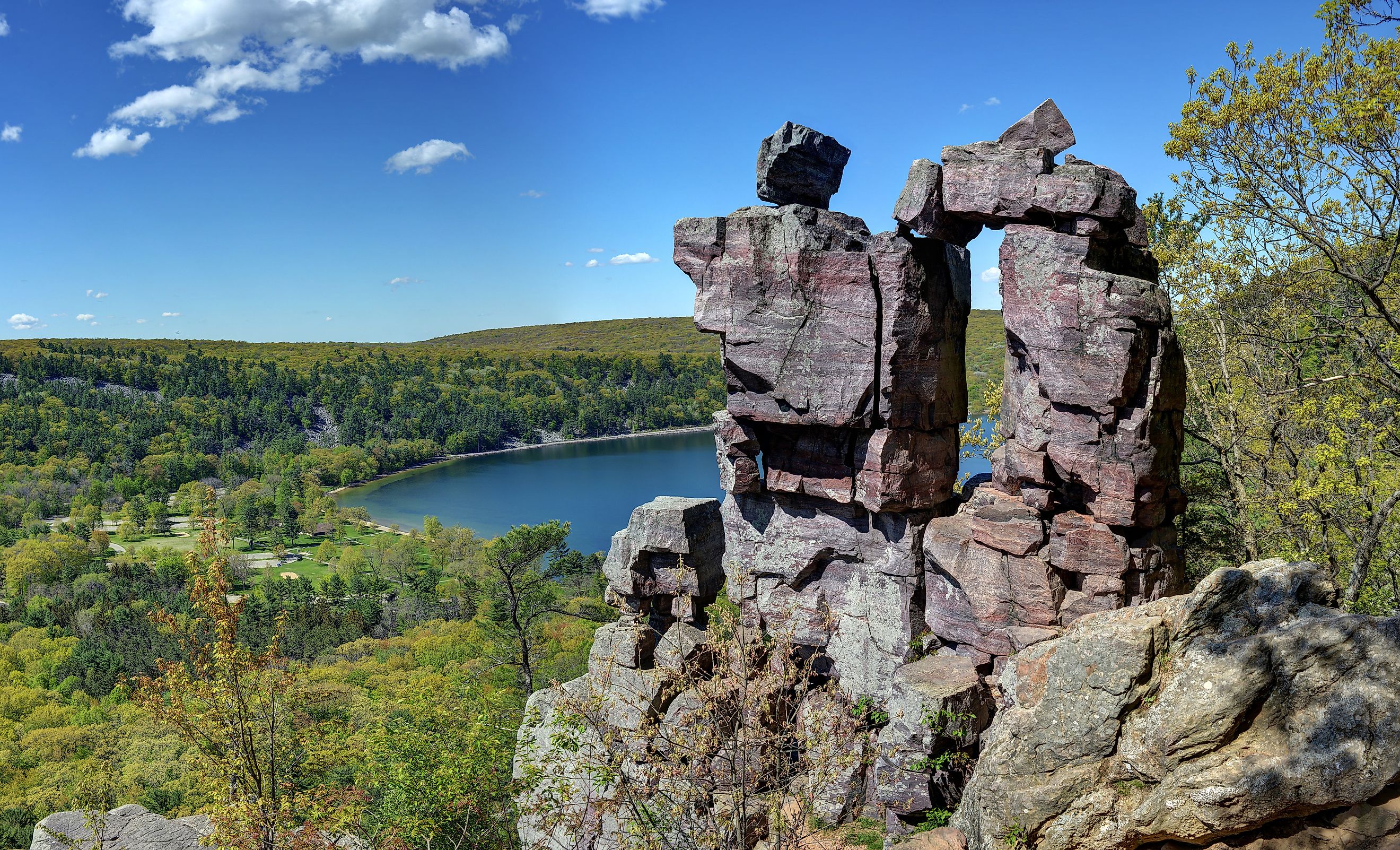
The Natural Wonders in Wisconsin
Wisconsin is a quintessentially Midwestern State, and with that label, it is expected that the locals here have a penchant for outdoor activities. Who can blame them when the Badger State is so chock full of wonderful parks and natural destinations? From its extensive shoreline in the Great Lakes region, encompassing Lake Superior and Lake Michigan, to its forest and fields where the great plains begin to emerge, the diverse landscape of this state appeals to many. This article dives into eight of Wisconsin's best natural wonders, from the cascading waters of the Big Manitou Falls to the mystic aura within the Cave of the Mounds.
Apostle Islands
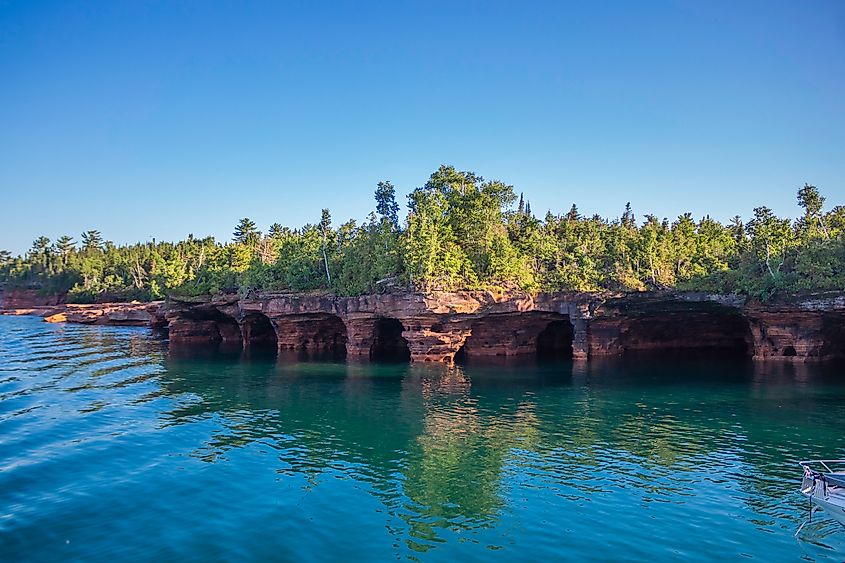
The Apostle Islands, located in Lake Superior off the northern coast of Wisconsin, are a stunning archipelago of 21 islands known for their natural beauty and important ecosystems. These islands are part of the Apostle Islands National Lakeshore, a park that maintains the trails, campgrounds, and visitor center in the nearby town of Bayfield.
The local sea caves are a major draw, particularly the ones on the mainland near Meyer’s Beach. These caves, sculpted by centuries of erosion caused by the powerful waves of Lake Superior, also transform when they are covered in dazzling ice formations in the winter, attracting adventurers and photographers alike during all seasons. The islands are also home to old-growth forests (not a common sight in this part of the United States), sandstone cliffs, and, as mentioned before, several hiking trails that weave throughout. The waters surrounding the islands are popular for kayaking, giving you another way to get an up-close view of the cliffs and caves.
For a different side of this area, visitors can also check out its host of historic lighthouses, with some dating back to the 19th century. Whether at the 1856 Old Michigan Island Lighthouse or the 1862 Raspberry Island Lighthouse, one can learn more about this storied national parkland at these rustic beacons.
Devil's Lake State Park
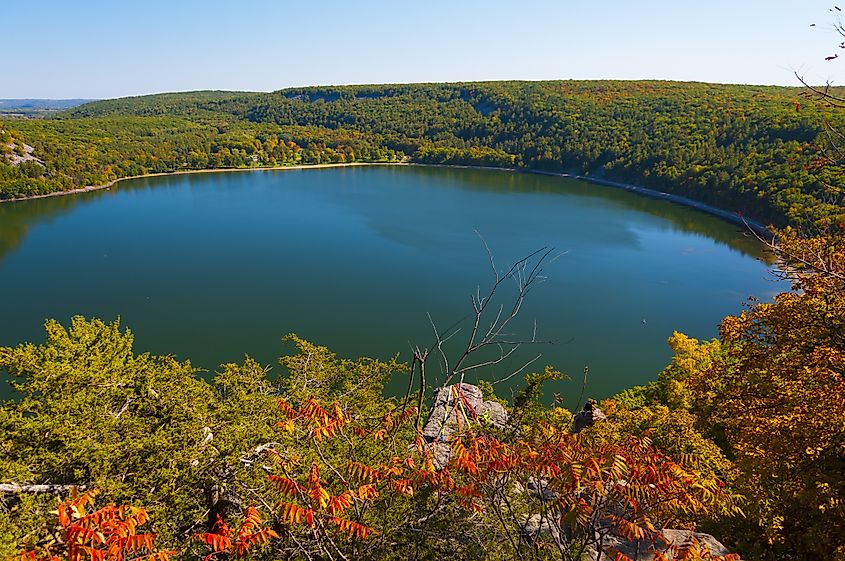
Just an hour's drive north of Madison, the state capital, Devil's Lake is among Wisconsin's most famous state parks. The park encompasses over 9,200 acres and is centered around the stunning Devil's Lake, a 360-acre body of water surrounded by impressive 500-foot (152 m) quartzite bluffs.
These dramatic bluffs make for some of the best rock climbing in the Midwest, attracting climbers from around the country looking to challenge them. Devil's Lake State Park also holds a network of over 29 miles (47 km) of trails, ranging from easy lakeside walks to challenging climbs up the bluffs. Beginners can opt for the 0.4-mile (0.6 km) Balanced Rock Trail, while enthusiasts challenge themselves to the 13.7-mile (22 km) Ice Age National Scenic Trail. No matter which hike you choose, breathtaking panoramic views of the lake or its lush forests are a given.
Swimming, fishing, and boating are also big activities here. The park’s two sandy beaches (North Beach and the South Shore) are perfect spots to relax in summer. Moreover, Devil's Lake State Park has top-notch camping facilities, making it an ideal destination for a weekend getaway from the city.
Cave of the Mounds
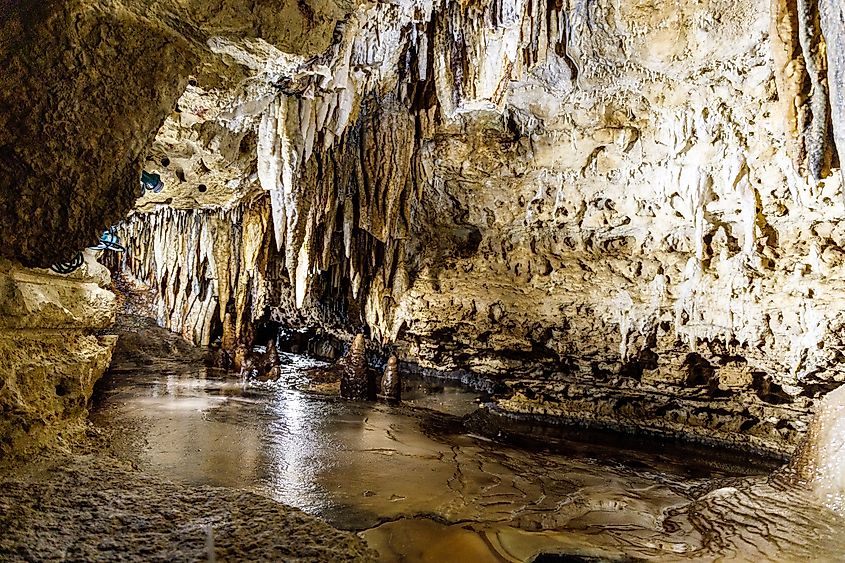
Cave of the Mounds, a short drive from the city of Madison, is a remarkable natural limestone cave and a National Natural Landmark. Discovered accidentally in 1939 during nearby quarrying operations, this underground marvel is often called the "jewel box" of America's major caves due to its fantastic array of crystal formations. It is best to see the cave on a guided tour, which will reveal this intricate underground world of stalactites and stalagmites. The well-lit pathways make it easy to see the delicate formations up close, showing off the variety of colors and textures created over millions of years of erosion. The visitor center, which includes a gift shop and gem mining activities for children, will teach you more about geology in general and the history of the cave.
If you have a case of claustrophobia, there is more to see above ground. Gardens, hiking trails, and rest areas are also in the surrounding area. This mixed prairie/forest landscape is part of a greater nature preserve and is home to native plants and wildlife. With so much to see and do, Cave of the Mounds is a must-see destination for anyone interested in Wisconsin's geology and natural wonders.
Whitefish Dunes State Park
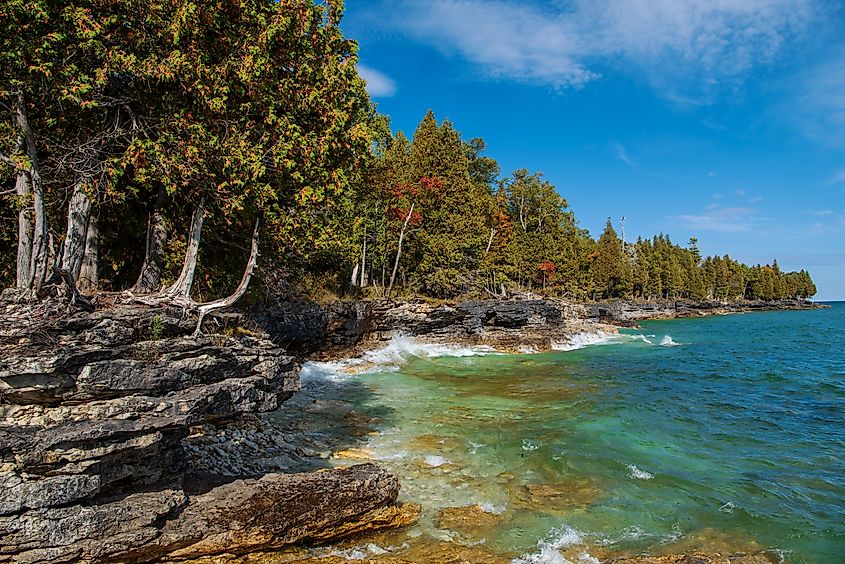
Whitefish Dunes State Park encompasses 860 acres along the Lake Michigan shoreline. It is a beautiful destination, exemplified by its towering dunes, clean sandy beaches, and pristine forests on the Door Peninsula. The park's main attraction is its impressive sand dunes, including "Old Baldy," the tallest dune in Wisconsin at 93 feet (28 meters). Be sure to explore the dunes on the network of trails in and around them, most of which will give you ideal viewpoints over the waves of Lake Michigan. The Black Trail is a more challenging hike through these dunes, while the Red Trail is a flatter, more scenic route along the shoreline.
Lake Michigan also has its fair share of historic shipwrecks, and if you're interested in seeing one for yourself, you're in luck at Whitefish Dunes State Park. A prime example is the cargo ship Australasia, which was sunk just offshore in 1896 and is highly visible in the clear waters on a calm, sunny day. Take a boat out and try to spot it this summer.
Driftless Area
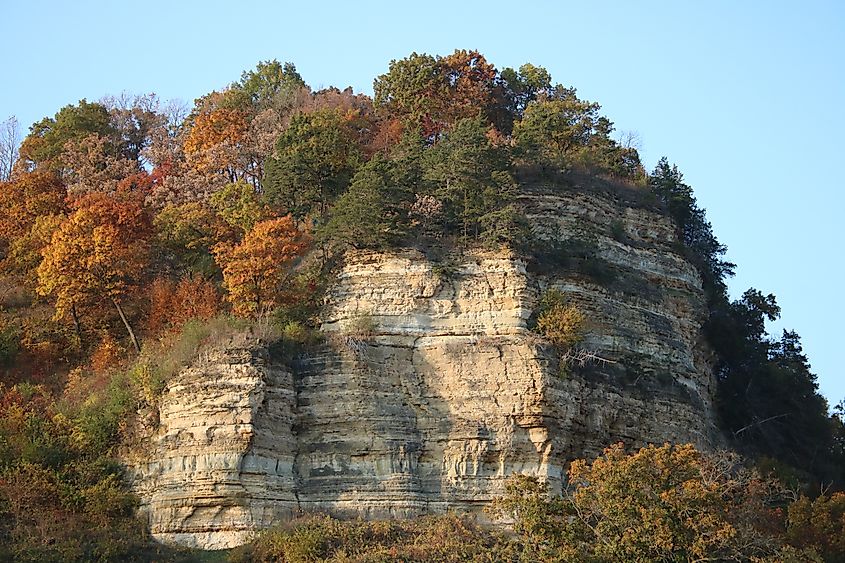
The Driftless Area of Wisconsin is a unique geological region that did not experience glaciation during the last Ice Age like much of the rest of North America, resulting in a distinct landscape. Covering the southwestern corner of Wisconsin and parts of Illinois, Iowa, and Minnesota, the Driftless Area is best characterized by its deep river valleys, rugged hills, and bluffs.
The absence of glacial smoothing left behind steep ridges and valleys, making it an idyllic escape for hikers, campers, and anyone who appreciates scenic natural areas. Numerous parks are located within the Driftless region, with choices such as Governor Dodge State Park and the Kickapoo Valley Reserve offering excellent opportunities to explore the landscape. This area is also a wellspring of spring-fed streams, making it a premier destination for trout fishing. These clear, cold waters support thriving populations of brook, brown, and rainbow trout.
For tourists interested in a more towny approach to the Driftless Area, there are many charming small towns and cities within. Some of the top spots are Viroqua, Mineral Point, La Crosse, and Richland Center, all with amenities like hotels, restaurants, shops, and more.
Big Manitou Falls
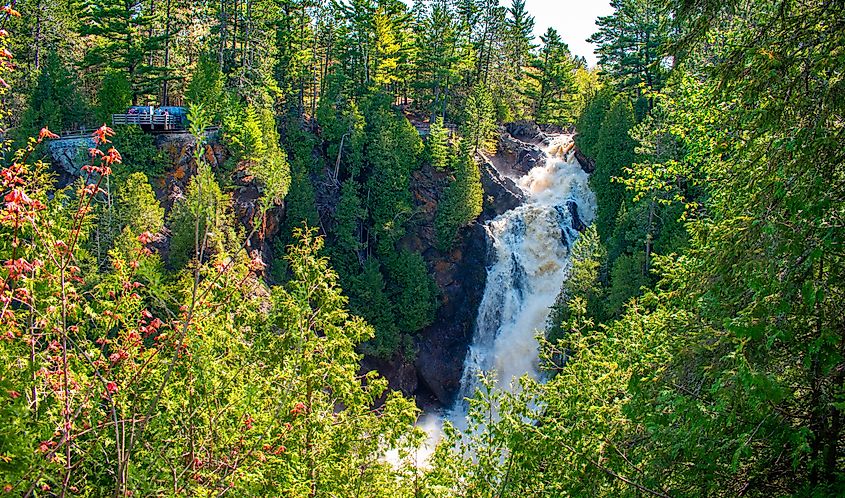
Big Manitou Falls is the highest waterfall in Wisconsin and is located within Pattison State Park in the far northwest corner of the state. Divided into two sections, Big Manitou Falls and Little Manitou Falls, these cascades are a must-see when exploring this remote area of the state. Big Manitou Falls plunges 165 feet (50 m) into the Black River, also making it the fourth-highest waterfall east of the Rocky Mountains. Its powerful flow and dramatic drop create a spectacular sight, especially in spring when the water volume is at its peak after winter snows melt. Various viewpoints are dotted along the rim of the falls and the river above and below it.
Little Manitou Falls, a shorter but equally enchanting waterfall, drops 31 feet (9 m) and is accessible along the same trail you would take to get to its bigger counterpart. Pattison State Park also features Interfalls Lake, a large campground, and a beach for swimming and launching small boats. For more urban accommodations, the city of Superior is an excellent choice, a short drive north of the park.
Horicon Marsh
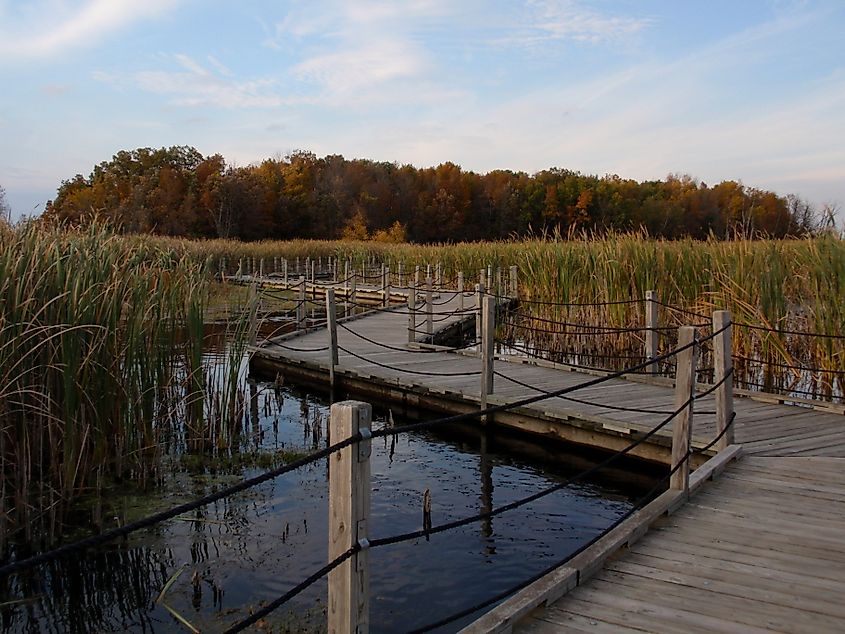
Northwest of the bustling metro area of Milwaukee is the Horicon Marsh, one of the largest freshwater marshes in the United States and a vital wildlife sanctuary. Spanning over 33,000 acres, the marsh is a designated Ramsar Wetland of International Importance and an essential habitat for numerous bird species, particularly during migration.
The marsh is divided into two main sections: the northern part, managed by the U.S. Fish and Wildlife Service as the Horicon National Wildlife Refuge, and the southern part, managed by the Wisconsin Department of Natural Resources as the Horicon Marsh State Wildlife Area. Together, they form a rich and diverse habitat, including open water, cattail marshes, sedge meadows, and woodlands. Tourists interested in the untouched wonderland can witness it on foot via its trails and boardwalks or on the water along the many canoe routes.
Birdwatching is a major draw at Horicon Marsh, with over 300 species recorded, including migratory waterfowl, sandhill cranes, and the occasional sighting of whooping cranes. The marsh is also home to other wildlife, such as muskrats, beavers, and various fish and amphibians. If you get confused by all the flora and fauna, visit the Horicon Marsh Education and Visitor Center, which contains several expertly curated displays and exhibits based on the marsh, educational programs, and viewing decks.
Willow River State Park
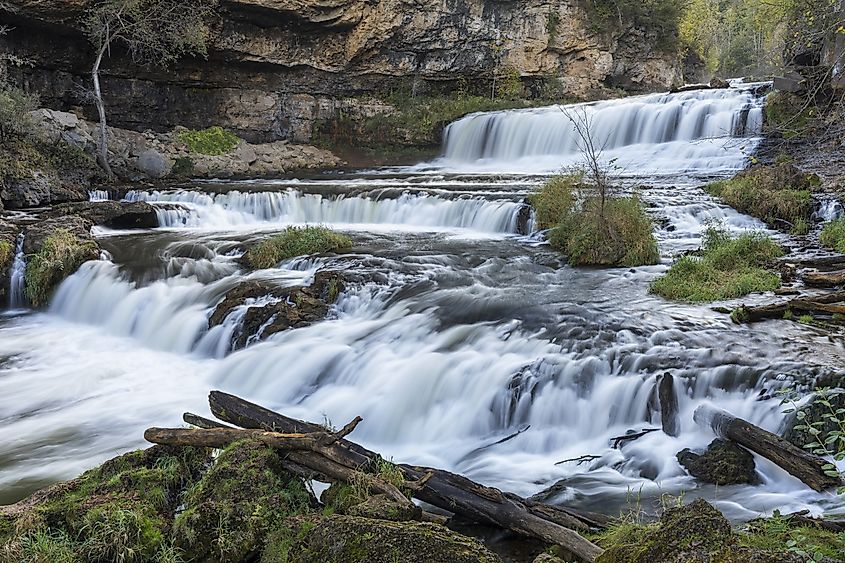
An easy 45-minute trip east of Minneapolis in neighboring Minnesota, Willow River State Park is another popular park widely known for its easy access yet abundant exciting and serene outdoor activities. Covering almost 2,900 acres, the rolling hills, wild forest, and a plethora of water bodies (including the Willow River, stream, and lakes), there is lots of space, regardless of how many visitors come here on a regular basis.
The park’s centerpiece is Willow Falls, a picturesque cascade that drops 45 feet over a series of rock ledges. The falls can be reached by walking the 0.3-mile (0.5-km) Willow Falls Hill Trail, a moderately challenging hike that also takes you along the surrounding gorge. The nearby Little Falls Lake, formed by a dam on the Willow River, is deep enough for swimming and fishing and is a popular spot for kayakers.
Willow River State Park boasts an extensive trail system suitable for hiking and biking in the warmer months and cross-country skiing in the winter. For a more adrenaline-filled experience, one can also opt for singletrack mountain biking, as the park features over a dozen trails of varying difficulty managed by the WIKI MTB club. Afterward, one can spend the night at one of the extensive camping facilities here, which includes group sites and secluded backpacking sites.
See The Natural Wonders of Wisconsin
Wisconsin is more than its distinguished cheese, beer, and professional sports; its top-tier wildlands ought to be explored if you haven't already. From the Driftless Region, which encompasses the entire southwestern area of the state, to the dense forests and expansive Great Lake shorelines to its northern and eastern edges and everything in between, it is not hard to get a true taste of the wild in the Badger State. Use this list to help plan your next road trip and impress your friends with photos of these gems.











